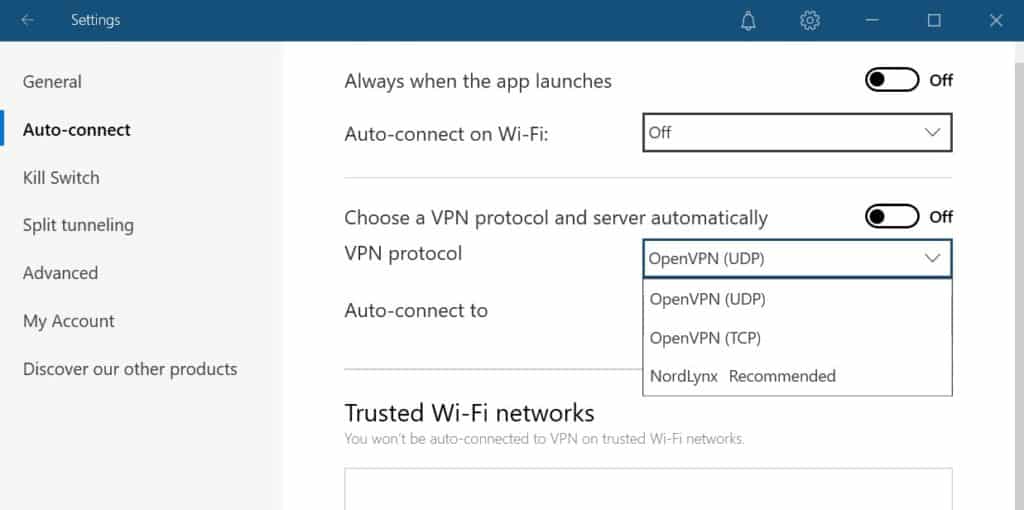NordVPN’s WireGuard Function Explained
With several advances in technology comes an increase in cybersecurity threats. A Virtual Private Network tries to combat these threats by establishing a secure tunnel to access the cyber world. VPN service providers continually invest in developing their software so they can provide users with state-of-the-art features.
NordVPN is in the top echelon of VPN service providers. It has consistently delivered years of exceptional service to users. To further make users’ experiences smooth, it developed a new protocol that provides astonishing speed and adequate security. This article dwells on NordVPN’s implementation of this protocol known as WireGuard. We will take a look at understanding WireGuard and how NordVPN takes advantage of its properties to build an exceptional protocol.
What Is WireGuard?
Wireguard is an open-source VPN protocol designed for better performance and easier configurations. It is still very much new and is not yet as widely accepted as other protocols such as OpenVPN and IKEv2/IPSec. It was initially developed for Linux devices only, but it currently supports several platforms, including Windows, macOS, Android, and iOS.
WireGuard is a lightweight protocol. It comprises around 4000 lines of code, significantly reducing the overhead that comes with establishing a VPN tunnel. In comparison, OpenVPN has over seventy thousand lines of code. It uses protocols such as ChaCha20 for encryption, Curve25519 for key exchange, Poly1305 for data authentication, SipHash for hashtable keys, BLAKE2 for hashing, and UDP for data transfer.
Understanding NordVPN’s WireGuard Function
NordVPN does not use the WireGuard protocol directly. It has developed its own proprietary protocol, although still based on WireGuard. This protocol is known as NordLynx. NordLynx offers faster connection speeds while securing your connection, which is what most VPN users want. It also uses fewer resources compared to other protocols. Understanding how NordLynx works will require diving into the WireGuard protocol.

The primary reason NordVPN had to modify WireGuard’s functionalities while creating its version is because of privacy concerns. WireGuard assigns static IP addresses to users connected to a server. It requires the VPN service provider to log your IP address on its servers. This is usually against the privacy policies of several VPN service providers. Ultimately, it can lead to situations where VPNs cannot guarantee the protection of your privacy. For example, hackers accessing a VPN server or a government agency requesting servers to aid with an investigation. It is why some VPN services have not accepted the use of WireGuard.
NordLynx does not have this issue, as NordVPN has taken steps to minimize the risks involved with using WireGuard. It inserts a double NAT (Network Address Translation) system into the original WireGuard source code. This system establishes two local network interfaces. One interface is for assigning a single IP address to all customers using a server, and the other interface is for giving each session a different IP address. It also uses a secure external database for user authentication.
Successfully eliminating the privacy issue with WireGuard, NordLynx operates in line with NordVPN’s tight No-Log Policy, which has been certified by PwC to be true. This makes it a very desirable protocol. Unfortunately, you can only use it with NordVPN.


Get up to 74% off now
Pros and Cons of Using NordVPN’s WireGuard Function — NordLynx
Every protocol has its strong points and weak ones. The protocol a user selects significantly influences two vital aspects of VPNs: security and speed. Let’s take a look at the advantages and disadvantages of using NordVPN’s WireGuard function–NordLynx.
Pros
1. Speed
The most obvious improvement that comes with using NordLynx is speed. Due to WireGuard’s low overhead, NordLynx capitalizes on using it as its foundation. It is faster than any other secure VPN protocol. Several speed tests show that neither OpenVPN nor IKEv2/IPSec is faster than it.
2. Security
NordLynx utilizes some of the most advanced security protocols that WireGuard uses. Furthermore, its implementation of a double NAT system ensures servers don’t store your actual IP address. Since NordLynx is not a standalone protocol and comes with a NordVPN subscription, you can access other security features like Double VPN, a kill switch, Onion over VPN, split tunneling, and an adblocker.
3. Lightweight
NordLynx’s source code has fewer lines than other protocols. It uses less processing power and consumes less battery than protocols like OpenVPN and IKEv2/IPSec.
4. Free
Using NordLynx does not come with any extra commitment to NordVPN’s subscription packages. There is no additional cost you will incur selecting NordLynx as your desired protocol.
5. Device Compatibility
NordLynx is compatible with Windows, macOS, iOS, Linux, and Android.
Cons
There are currently no known cons of using NordLynx. Since it’s built on WireGuard, it’s better to keep an eye out for any issues you might have and report them.
Conclusion
NordVPN took a step further in delivering excellent service by developing the NordLynx protocol. This WireGuard-based protocol remains the quickest secure one we have seen and offers all the exceptional features you get using NordVPN.